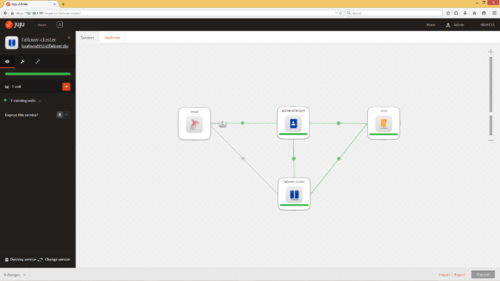
Windows Server Failover Clustering (WSFC) is the de facto standard high availability technology in Windows
Overview
Windows Server Failover Clustering (WSFC) is the de facto standard high availability technology in Windows, where a group of servers (nodes) works together to increase the availability and scalability of clustered resources. In case of failure of individual resources or one or more nodes, failed resources are automatically restarted on the remaining nodes. In order to ensure always a majority when assessing which nodes should control the cluster, an odd number of hosts is needed or alternatively a file server (deployed with the Windows File Server charm) can be added in a “witness” role.
The Failover Clustering charm requires a relationship with the Active Directory charm and manages automatically the cluster membership when the number of nodes increases, allowing an amazingly scalable solution. The Failover Clustering charm is used in conjunction with other charms, for example in the SQL Server AlwaysOn use case.
Screenshots
Usage
|
1 |
juju deploy wsfc |
How to connect to a Windows Active Directory:
|
1 2 |
juju add-relation wsfc active-directory juju add-relation wsfc smb |
A Windows machine can belong to only one cluster.
The smb relation provides a witness share, which will be used for a node and share majority quorum.
Charm scaling
How to add another unit:
|
1 |
juju add-unit wsfc |
How to remove an existing unit:
|
1 |
juju remove-unit |
Configuration
Start now
Please fill out the form below for pricing information and for a free trial:











